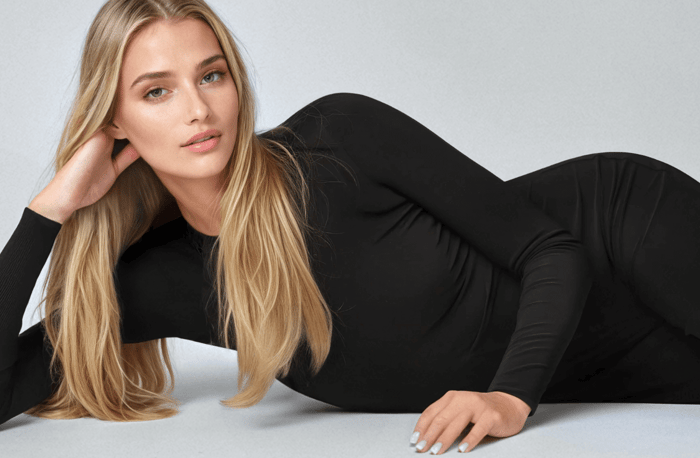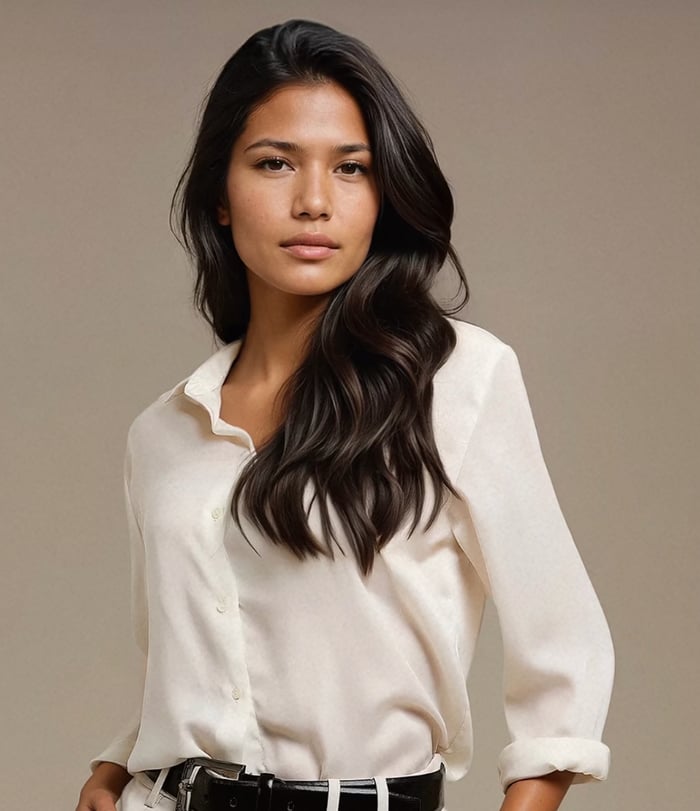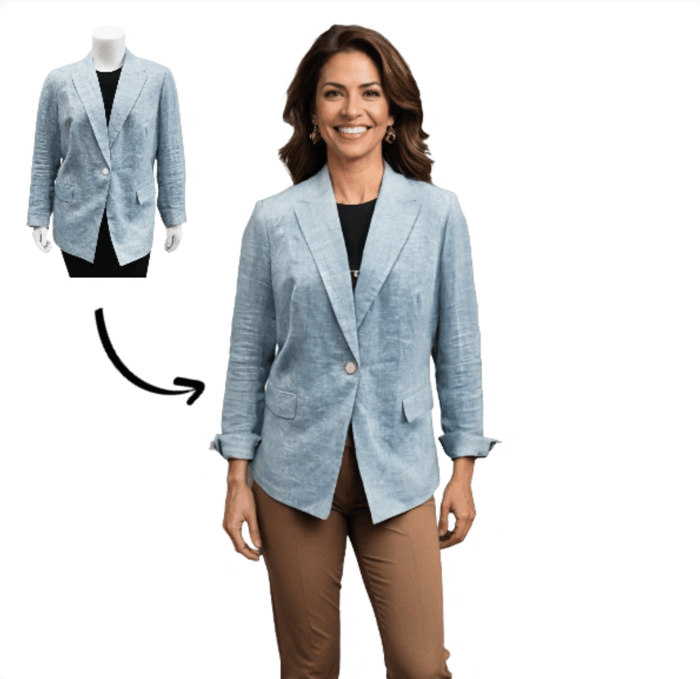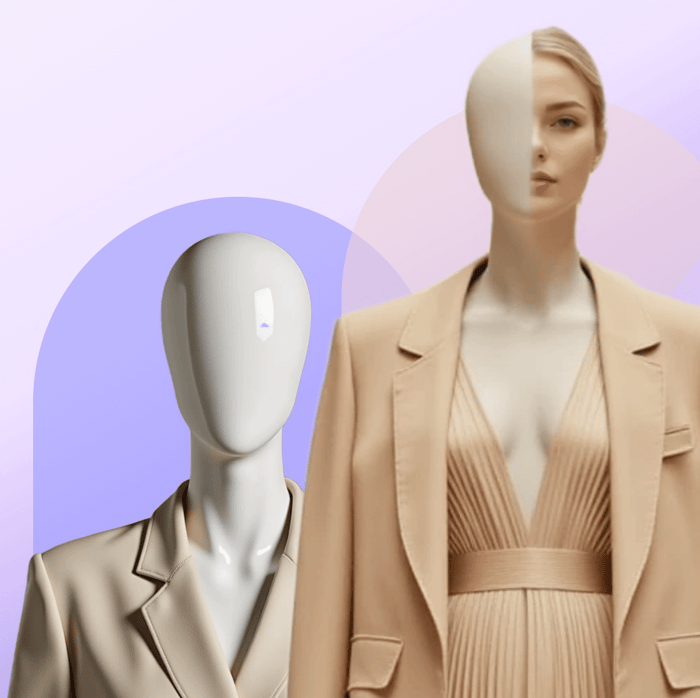Modelia vs Botika: A Detailed Comparison for Ecommerce Businesses
Table of Contents
- What Are Modelia and Botika?
- Side-by-Side Feature Comparison
- Where Botika Falls Short
- Why Leading Brands Prefer Modelia
- Real-World Use Cases
- 7. Final Verdict: Modelia vs Botika
- See Modelia in Action
- Top Reasons to Switch to Modelia Today
- How to Choose the Right AI Visual Tool for Your Fashion Brand
- Frequently Asked Questions
In the world of fashion ecommerce, visuals drive conversions. But producing high-quality product images at scale is expensive, time-consuming, and resource-intensive. That’s where AI image generation tools conflict between Modelia vs Botika comes in.
Both platforms promise to streamline visual content production using virtual models and automation, but their approach, output quality, and creative flexibility vary widely.
In this guide, we’ll break down Modelia vs Botika in depth:
What features they offer
How they differ
Which one fits your business
And why one of them may give your ecommerce brand a long-term competitive edge
What Are Modelia and Botika?
Modelia and Botika are AI tools built to replace traditional model photoshoots with hyper-realistic, automated image generation. They help ecommerce brands create product visuals that look professionally shot, without the cost and logistics of a physical photoshoot.
But the similarities end there.
Modelia at a Glance
Built for fashion brands that need creative direction and brand consistency
Offers studio-grade quality, real-time editing, and over 100 customizable virtual models
Supports photos, videos, and virtual try-ons
Used by marketplaces, DTC brands, and creative teams alike

Botika at a Glance
Focused on fast image generation with minimal user input
Users upload a product image, and Botika automatically generates variations using virtual models
More limited in model diversity, editing options, and creative flexibility
Targets mid-size fashion retailers with basic image needs

Side-by-Side Feature Comparison
Feature | Modelia | Botika |
|---|---|---|
Model Library | 100+ diverse and customizable models | Limited preset models |
Custom Styling | Choose outfits, mood, lighting, poses | Not available, automated only |
Visual Quality | Studio-grade realism | Mid-range; often looks artificial |
Output Types | Images, videos, virtual try-ons | Images only |
Editing Tools | Yes: lighting, skin tone, background | No editing or fine-tuning |
API Integration | Available | Limited |
Pricing Transparency | Yes, tiered plans and free trial | Yes |
Use Case Flexibility | Marketplaces, DTC, luxury, social commerce | Mid-market apparel |
Creative Direction | Full control over all visual elements | None, automated generation only |
White-Label & Branding | Full white-label support | Not supported |
Where Botika Falls Short
Botika provides a fast and user-friendly way to generate product images, but that simplicity comes at a cost, especially for brands that value visual identity.
Key limitations:
No creative control: Users cannot select specific model features, poses, or settings.
Rigid output: Backgrounds, lighting, and styling are generated automatically with no ability to edit.
Lack of inclusivity: Limited model diversity may not reflect your customer base.
No dynamic content: Botika doesn’t support video, 3D try-ons, or animations—making it hard to stay relevant in social and mobile-first channels.
No visual consistency: Without manual adjustments, visual branding is harder to maintain across SKUs.
No transparent pricing: You must go through a sales team for access, which slows onboarding.
If your brand prioritizes speed above all else and has minimal styling needs, Botika may be enough. But most fast-growing ecommerce teams demand more.

Why Leading Brands Prefer Modelia
Modelia was designed for ecommerce teams that want to move fast without sacrificing quality. It's not just an AI tool, it's a full creative production engine.
Standout strengths:
Photographic realism: Generated images match the quality of real model photoshoots.
Total control: Choose models, outfits, expressions, lighting, and camera angles.
Consistent brand visuals: Maintain the same aesthetic across your entire product catalog.
Rich content: Go beyond static images, generate videos, model spins, social ads, and try-ons.
Scalability: Generate thousands of images per day with consistent output.
Collaboration-ready: Share projects, get feedback, and manage revisions in one place.
Self-serve and transparent: Sign up, test the platform, and scale at your own pace.
Whether you run a DTC label, a fashion marketplace, or a social commerce brand, Modelia adapts to your needs.

Real-World Use Cases
Use Case | Modelia | Botika |
|---|---|---|
DTC Brands | ✅ Campaign control & visuals | ❌ Limited customization |
Fast Fashion | ✅ Speed + creative flexibility | ✅ Fast images, but rigid |
Marketplaces | ✅ High-volume + consistent | ✅ Mid-volume ready |
Social Commerce | ✅ Video + try-ons + mobile-first | ❌ No dynamic content |
Luxury Brands | ✅ Premium quality visuals | ❌ Visual realism too low |
Inclusive Catalogs | ✅ Diverse model selection | ❌ Limited representation |
7. Final Verdict: Modelia vs Botika
If your ecommerce strategy relies on consistent branding, immersive content, and fast production cycles, Modelia clearly stands out.
Choose Modelia if you want:
True-to-life visual quality
Creative control over every image
A single platform for photo, video, and virtual try-ons
Speed, scale, and seamless integration
Choose Botika if:
You need basic visuals with minimal effort
You don’t mind automated results
You’re early-stage and testing AI photography for the first time
But for brands ready to elevate their visual content game—Modelia is built to grow with you.
See Modelia in Action
Curious what your products would look like in Modelia?
🚀 Try it free with your product images
Top Reasons to Switch to Modelia Today
Create stunning visuals in under 30 minutes
Save up to 80% in production costs
Match your brand identity across every SKU
Automate photos, videos, and try-ons in one place
Collaborate with your creative and ecommerce teams
Get started instantly, no sales call required
How to Choose the Right AI Visual Tool for Your Fashion Brand
With so many AI visual tools available, selecting the right one for your ecommerce brand can be overwhelming. Should you prioritize creative control, speed, diversity, or scalability? The answer depends on your unique goals and content workflows. Here's a practical breakdown of what to consider when choosing between platforms like Modelia, Botika, and others.
1. Creative Control vs. Automation
If your team values full creative direction, choosing model poses, lighting, backgrounds, and detailed styling, Modelia offers greater flexibility with its prompt-based generation and customizable templates.
If you prefer a plug-and-play solution with minimal input, Botika’s template-based system can be faster, but more limiting in terms of brand differentiation.
2. Type of Visual Content You Need
Do you want lifestyle images, ghost mannequin renders, or clean studio shots? Modelia supports a variety of output formats and lets you adapt visuals for different platforms (e.g., PDPs, social media, ads). Botika mainly focuses on studio-style fashion shots with virtual models.
3. Diversity and Representation
Inclusive imagery matters. If your brand markets to diverse audiences and prioritizes realistic skin tones, body shapes, and inclusive aesthetics, Modelia offers far more model diversity and styling options than Botika, which currently has limited avatar variability.
4. Workflow Speed and Batch Output
Need to generate hundreds of images at scale? Both platforms offer batch processing, but Modelia’s smart tagging and bulk-edit features give you more speed without sacrificing quality. Botika is slightly more rigid in how batches are managed.
5. Budget Considerations
Modelia offers flexible pricing plans tailored to your output needs—from DTC brands to large marketplaces. Botika’s pricing is less transparent, and often based on negotiation or custom enterprise quotes.
6. Branding Consistency
Maintaining a consistent look across product collections is key. Modelia lets you build branded visual guidelines (lighting, styling, skin tone, framing) that apply automatically to future generations, something Botika doesn’t yet support as robustly.
Final tip: Before committing, try a free trial or request a demo from both tools to evaluate output quality, ease of use, and how well each aligns with your visual identity.

Frequently Asked Questions
Is Modelia more expensive than Botika?
Modelia offers transparent, scalable pricing, including a free trial. Botika’s pricing is private and quote-based.
Can I use my own models with Modelia?
Yes! You can upload references and use virtual try on tool or choose from 100+ customizable virtual models.
Does Modelia support video and try-ons?
Absolutely. Modelia supports motion visuals, product walkthroughs, and virtual try-ons, Botika does not.
Is there a free trial available?
Yes. You can try Modelia for free and create your first visuals without commitment.
How would you rate this article:
Related Articles
- India’s Best Fashion Designers to Know in 2025
- Essential Flat Lay Photography Tips for Perfect Shots
- Best Free AI Image Generators You Can Use in 2026
- 7 Fashion Brand Marketing Strategies to Succeed in a Competitive Market
- Best Practices for Capturing High-Quality Mannequin Photos
- Modelia Yearbook 2025: AI, Fashion and the Vision Shaping 2026
- Top fashion brands leveraging artificial intelligence in 2025
- Best Virtual Try-On Tools for Retailers to Boost Sales and Engagement
- Best AI Selfie Generators Reviewed
- The Future of AI Shopping: Smarter, Faster, Personalized


